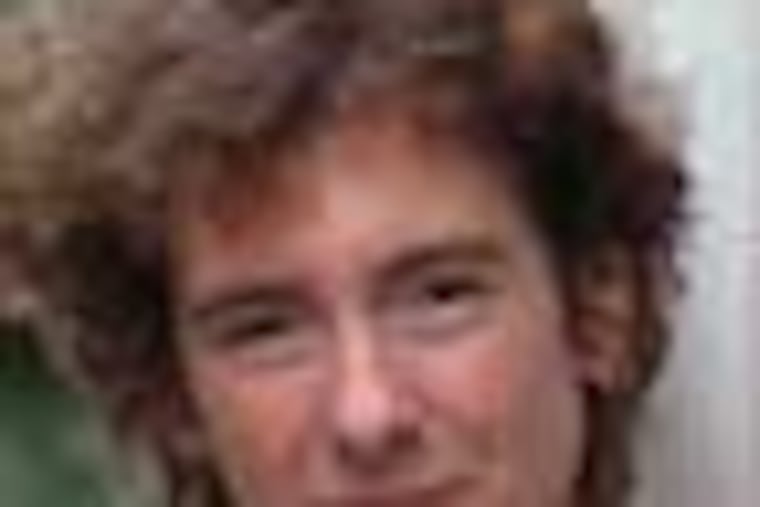A mother's cruelty drove her to write
In her breakthrough novel, Oranges Are Not the Only Fruit, Jeanette Winterson called the coming-out, coming-of-age story "semiautobiographical." The fictional bits, it turns out, were those characters who helped Jeanette, the teenage main character who suffered under her Pentecostal adoptive mother. In real life, Winterson had no such allies.

By Jeanette Winterson
Grove Press.
224 pp. $25
nolead ends nolead begins
Reviewed by Joelle Farrell
In her breakthrough novel,
Oranges Are Not the Only Fruit
, Jeanette Winterson called the coming-out, coming-of-age story "semiautobiographical."
The fictional bits, it turns out, were those characters who helped Jeanette, the teenage main character who suffered under her Pentecostal adoptive mother. In real life, Winterson had no such allies.
Winterson titled her new memoir Why Be Happy When You Could Be Normal? These were the final words that her adoptive mother said to her as she left her home in northern England at age 16 in the mid-1970s. Winterson had told her mother that she'd rather leave than break off a relationship with a girl she was seeing because it made her happy.
But Winterson's mother, Constance Winterson, never seemed to grasp happiness.
"She was a flamboyant depressive; a woman who kept a revolver in the duster drawer, and the bullets in a tin can of Pledge," writes Winterson, who will discuss her book Tuesday night in an appearance at the Free Library of Phildelphia.. "A woman who stayed up all night baking cakes to avoid sleeping in the same bed as my father. A woman with a prolapse, a thyroid condition, an enlarged heart, an ulcerated leg that never healed, and two sets of false teeth - matt for every day, and a pearlised set for 'best.' "
Constance Winterson couldn't understand why the daughter she adopted turned out as she did: wild, combative, and gay.
She would often tell Jeanette, "The devil led us to the wrong crib."
Winterson lays out the painful details of her childhood without much fuss: that was the way of those who lived hard lives in Accrington, an industrial town north of Manchester, a time and place that Winterson captures in eloquent detail. The soil is heavy clay "that oaks enjoy." The town made bricks that were once the world's hardest and provided the foundation for the Empire State Building. The heavy clay from the area includes iron ore, which made the bricks bright red and especially strong. They became known as "Nori" bricks after someone stamped "iron" backward on them.
But Winterson's nostalgia for Accrington ends at the door to her childhood home. She doesn't talk much about the beatings. When her mother locked her out of the house, she'd sleep on the porch. Come morning, she'd drink both of the delivered milk bottles just to anger her mother more.
When her mother discovered paperbacks stuffed under Jeanette's mattress (secular books were forbidden in the Winterson household), Constance threw them out the window into the backyard and lit them on fire.
"I had bound them all in plastic," Winterson writes. "Now they were gone."
The next morning, she picked up some of the remaining shreds of text.
"It's probably why I write as I do - collecting the scraps, uncertain of the continuous narrative," she writes. "What does [T.S.] Eliot say? 'These fragments have I shored against my ruin.' "
In that fashion, Winterson's narrative is not linear: it skips between remembrances of early childhood to later years, and back again. Midway through the book, in a chapter she calls "Intermission," Winterson jumps ahead 25 years, saying she had no intention of writing a "womb to tomb" story about herself.
The book splits into two parts: The first half explains how Winterson became a writer and how her mother, because of her cruelty, was the driving force.
The second half shows what happens when Winterson realizes that, after fleeing from it and writing around it for decades, she must face her painful past. She realizes that her mother also influenced her personality in a way that limited her own happiness.
Winterson doesn't turn around willingly: She's forced to, after a bad breakup, the death of her father, and a deep depression. Winterson calls it "madness." She fought suicidal thoughts, trying to understand why she was suddenly overcome with fits of nightmares and sweating panic, followed by days of listlessness.
She is drawn to a question many, if not all adopted children ponder: Why was I given up?
Winterson chronicles her search for her biological mother, and along the way comes to realize, with some softening, that her adoptive mother must also have suffered from depression and self-hatred.
Winterson doesn't excuse Constance Winterson, whom she refers to throughout the book as "Mrs. Winterson." But she seems to come to accept all that happened in a way that allows her to go on living with less anger. She dedicates her memoir to her "three mothers": a close friend, her biological mother, and Constance Winterson.